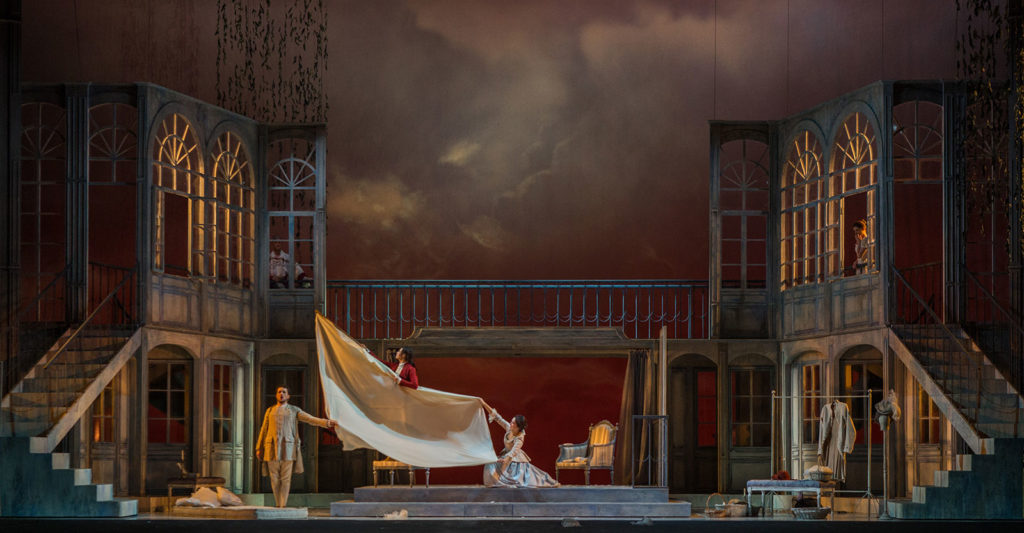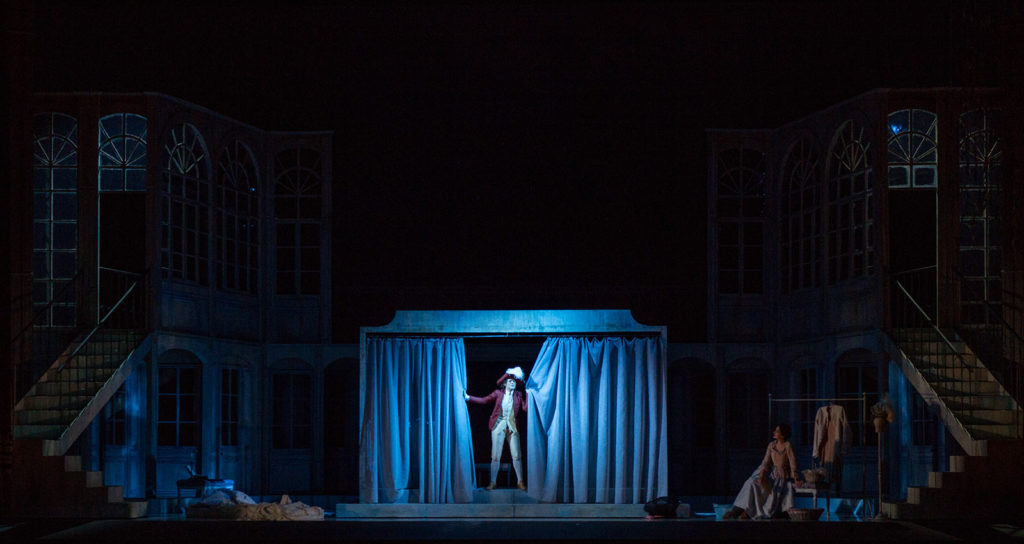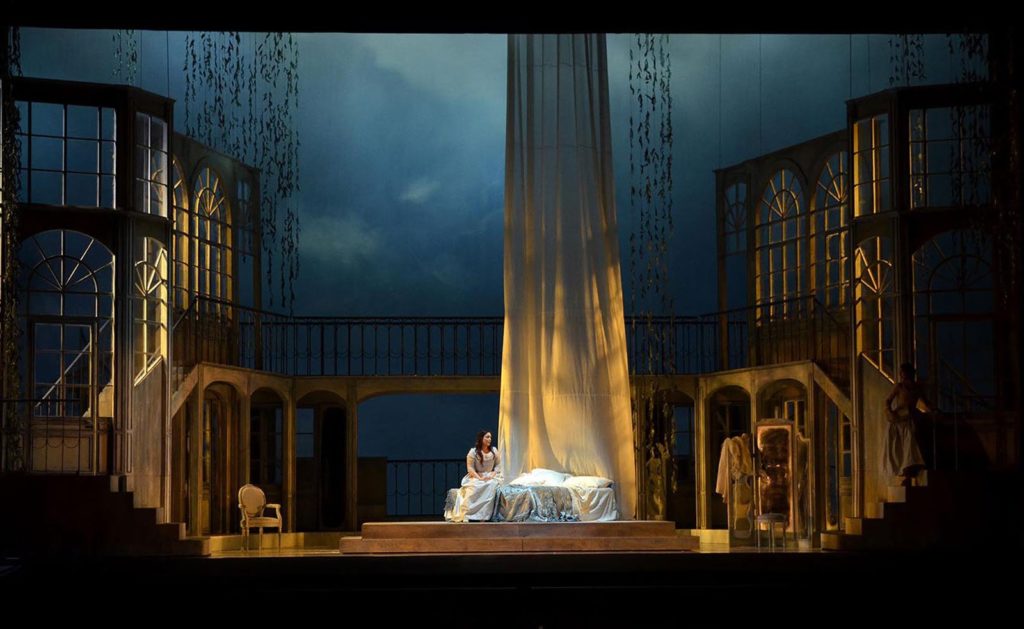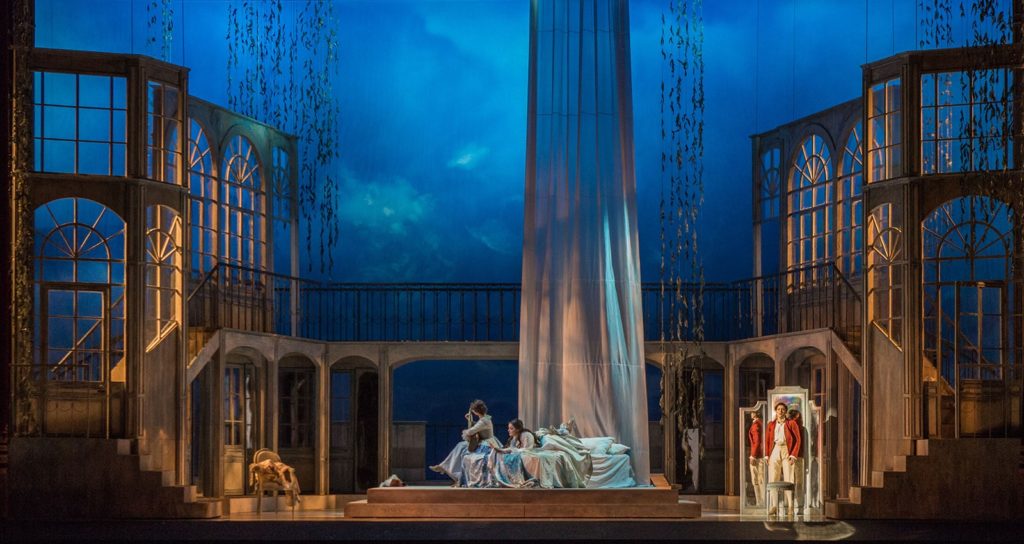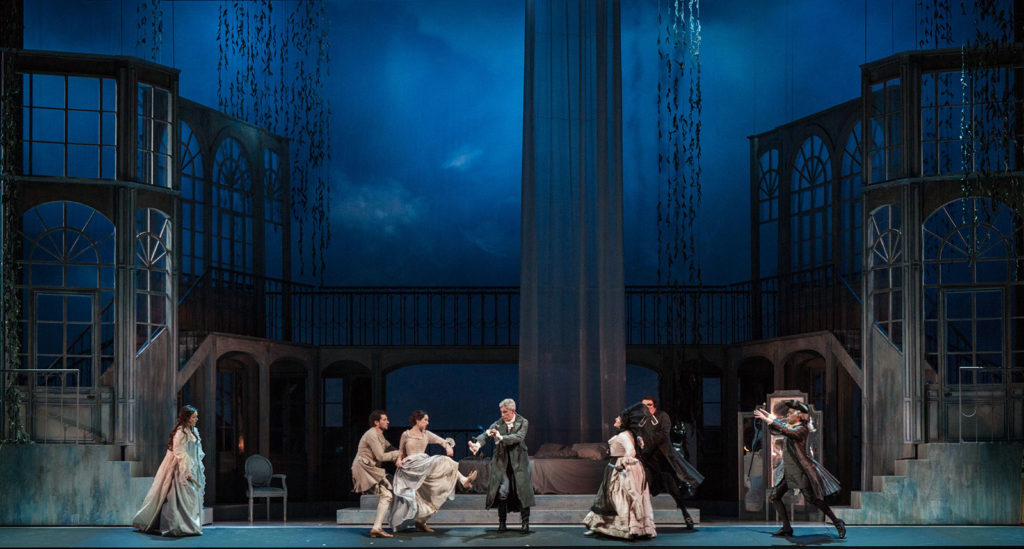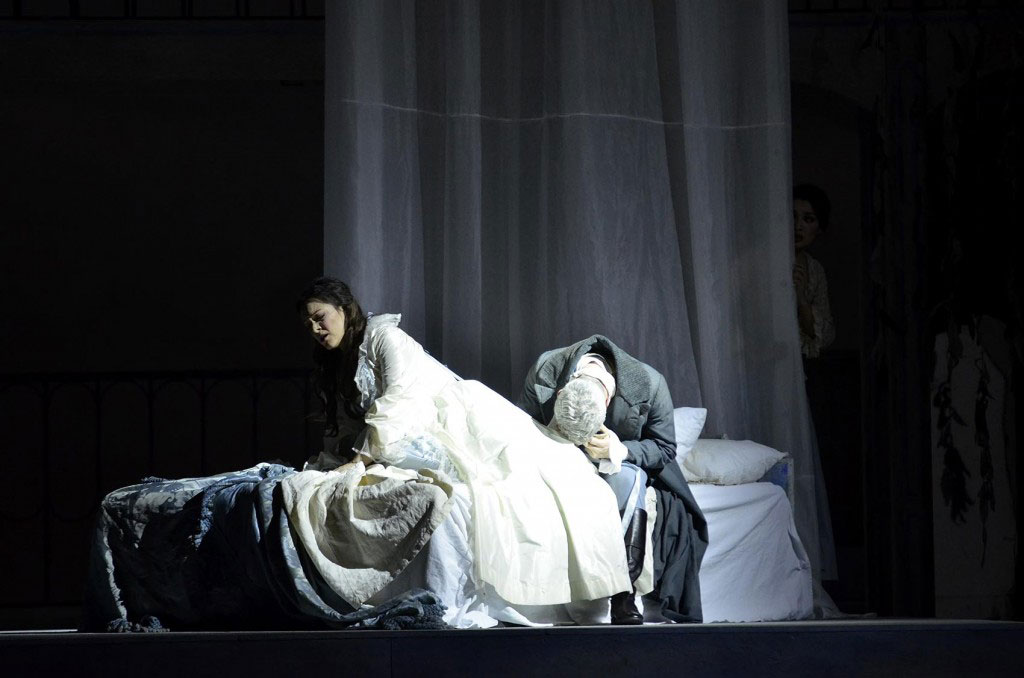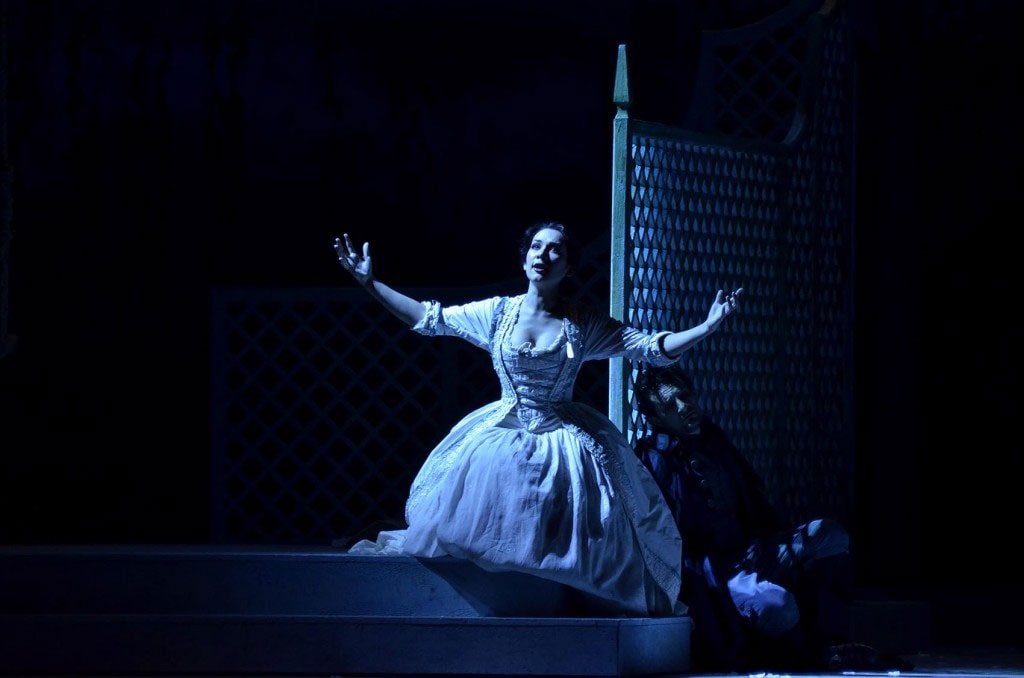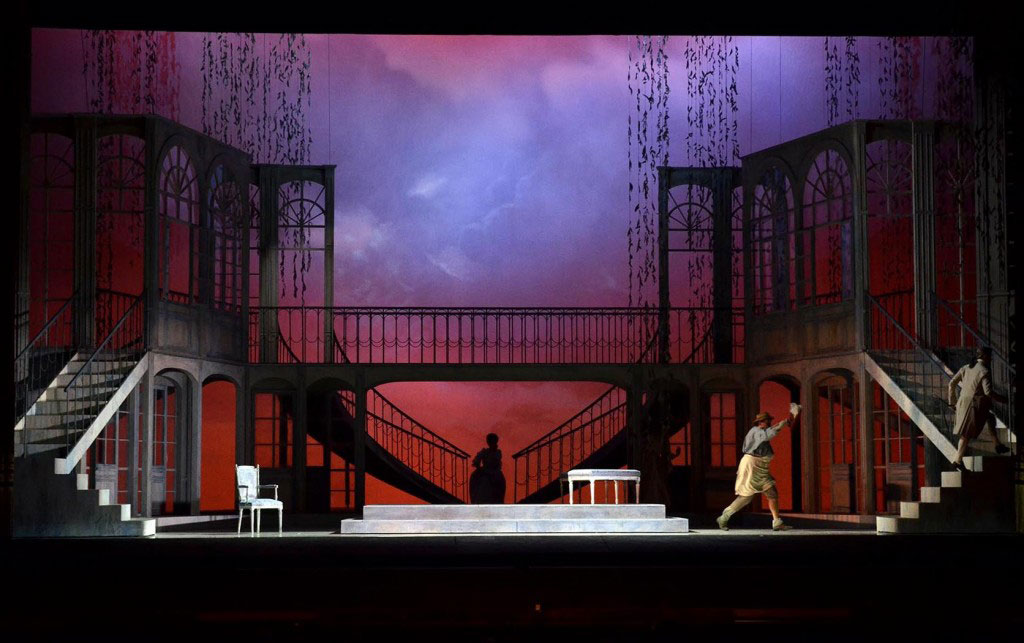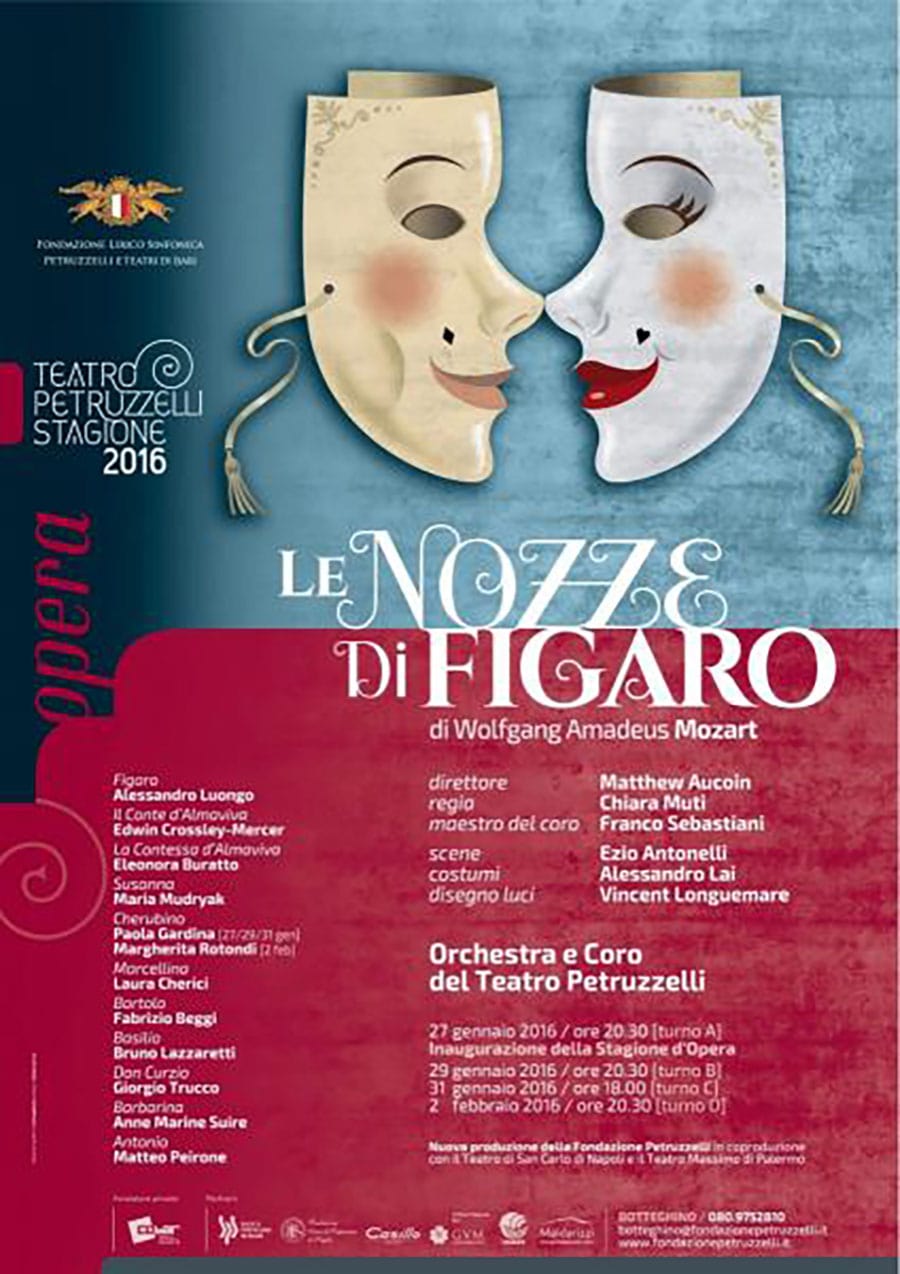
28 Jun Le nozze di Figaro
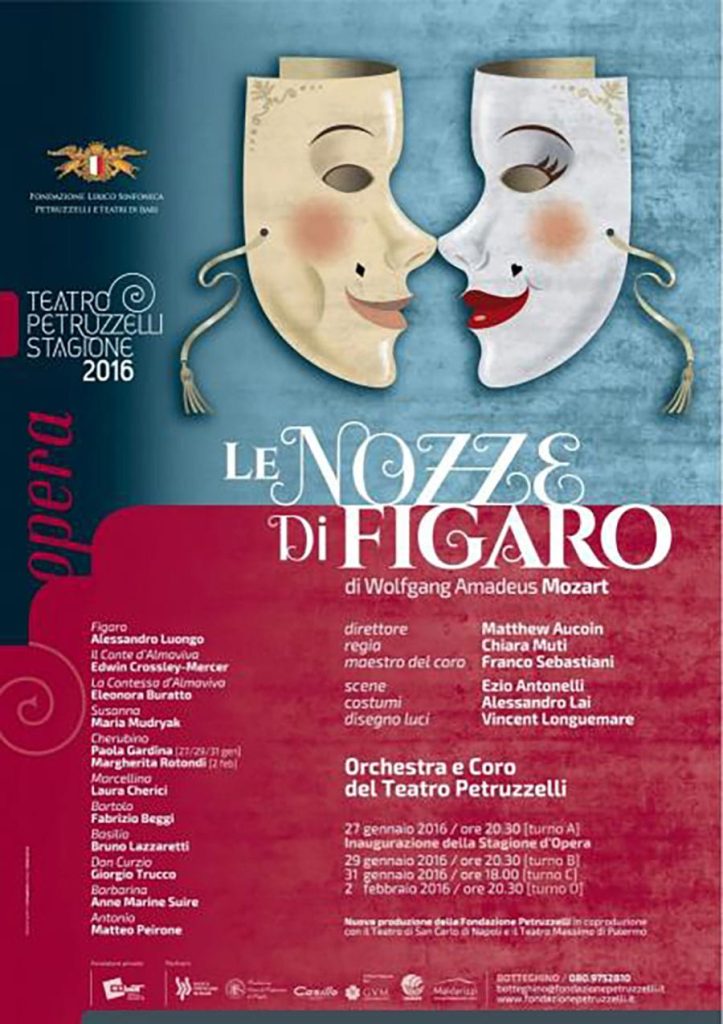
Credits
THE MARRIAGE OF FIGARO by WOLFGANG AMADEUS MOZART
Or The Crazy Day
Teatro Petruzzelli di Bari
Libretto by Lorenzo Da Ponte
Based on the comedy La folle journée ou le mariage de Figaro by Pierre-Augustin
Caron de Beaumarchais
Music by Wolfgang Amadeus Mozart
Conductor: Matthew Aucoin
Director: Chiara Muti
Sets: Ezio Antonelli
Costumes: Alessandro Lai
Lighting design: Vincent Longuemare
Costume assistant: Concetta Nappi
Premiere: Vienna, Burgtheater, May 1, 1786
Figaro
Alessandro Luongo
Count Almaviva
Edwin Crossley-Mercer
Countess Almaviva
Eleonora Buratto
Susanna
Maria Mudryak
Cherubino
Paola Gardina
Margherita Rotondi
Marcellina
Laura Cherici
Bartolo
Fabrizio Beggi
Basilio
Bruno Lazzaretti
Don Curzio
Giorgio Trucco
Barbarina
Anne Marine Suire
Antonio
Matteo Peirone
Directorial Notes
COURT – understood as a place of public domain. There is no intimacy; the central platform is a metaphor for a stage of representation, at everyone’s mercy…
The stairs symbolize the ongoing social change… a sign of continuous transformation… some rise while others fall… No position is ever guaranteed… Everything is in constant flux…
NATURE – present on stage from the beginning, nature, in the form of weeping willows, gradually takes over the space act by act… A metaphor for instinct prevailing over reason… and Nature over man…
DESIRE – present from the start on stage, repressed, betrayed, shared, rejected, masked… in all possible forms…
LOVE – in La Folle Journée all stages of love are present. Adolescent (Cherubino and Barbarina), passionate (Figaro and Susanna), betrayed and bored (Count and Countess), mature and practical (Marcellina and Bartolo), not to mention the transversal figures of Don Curzio (the stammering law), Basilio (cynical and solitary by choice and fear of suffering), and Cherubino (the embodiment of DESIRE itself). La Folle Journée is a metaphor for a tyrannical time that passes, against which no Love can defend itself… Everyday life, the first enemy of Passion, envelops the Count and Countess in boredom, as well as the social class to which they belong by birth, not conquest. In this state of melancholic apathy, the Nobility already seems defeated by the dynamism of a new social class unafraid to assert itself. — “What Virtue! What Justice!” — the Count’s own servants ironically and cryptically mock him! The Revolution is underway! But Mozart goes beyond… He paints us as we are, describing and sublimating human vices and virtues…
He depicts the misery of human nature and, at the same time, the greatness man has in facing his own destiny and forgiving himself despite everything! Despite sins and miseries…
Nature, re-entering the court, reclaims the space it deserves… Nature understood as instinct and the freedom to be oneself… far from the “walls” we have built to imprison ourselves… and in the garden, at night, instinct — the quintessentially feminine attribute — triumphs! Nature prevails over all, and within nature, forgiveness can be complete… The Countess forgives, along with the Count, our sins and imperfections, which through Mozart manifest with miraculous heights that take our breath away…
As if asking God forgiveness for us, for our miseries, but doing so with such perfection… making us believe we are part of that elusive Divine…
The Countess forgives an unfaithful man… she forgives him knowing he will sin… again and again… she forgives despite everything… and everyone responds, “Ah! So all will be content,” but very softly… almost afraid to break that enchanted moment of illusion, the one we fight for every day against adversity… A sublime moment of Truth that escapes us but for which our hearts yearn… and it is discovered, through this forgiveness, that one can be true even while lying, and rush to celebrate life… fogging the ongoing Tragedy… in the turmoil, in the tremor… to forget once more and again who we really are…



